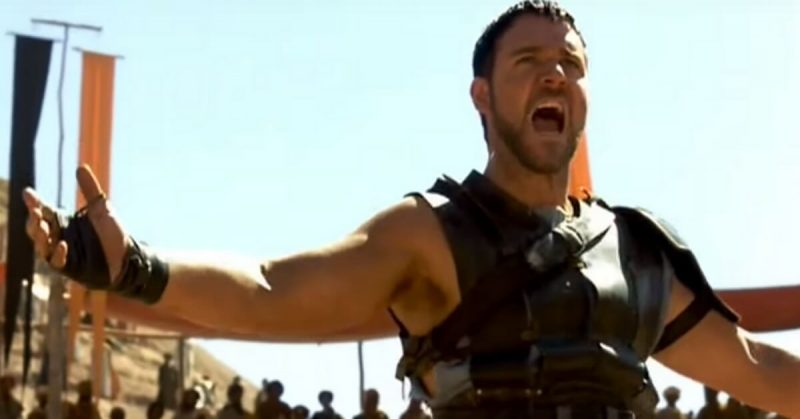Are you not entertained? The Gladiator is now seventeen years old, but it has stuck around in modern culture quite well. We know that huge amounts of the movie were horribly historically inaccurate, but the movie does have a very real and interesting historical setting. Understanding the true history behind the movie without nitpicking the tiny details can help us appreciate the roots of the film even more.
To start, Marcus Aurelius is presented as a very wise and well-meaning old emperor who had a troubling reign full of war. This is a great representation of a man who would go down as the last of the five good emperors. Marcus Aurelius went down as the philosopher-emperor, being one of the great thinkers among all the emperors. He was, unfortunately, plagued by war and did die on campaign with his son and daughter visiting.
Commodus was that crazy
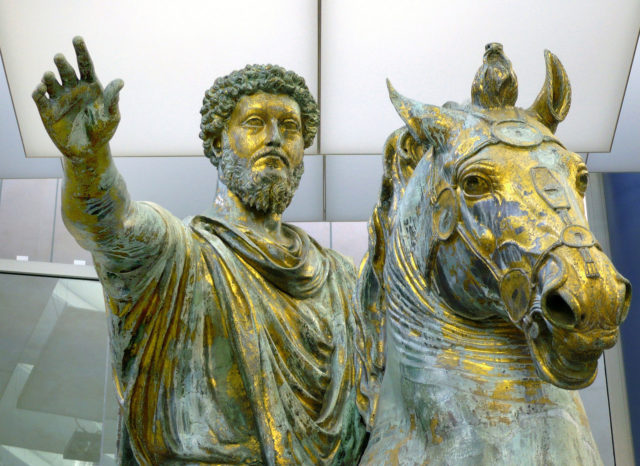
The theme of Commodus killing his father after being denied the throne is actually a fringe theory of history, but a very unlikely one. Though the five good emperors had continued their success by adopting those they thought could rule the best, Aurelius decided to name his son as the heir. At the time of Aurelius’ death, Commodus had already been serving as the co-emperor for three years.
Though his ascension to the throne was fairly smooth, Romans still feared Commodus as he was quite neurotic and overall an extremely odd and vindictive person. He was only 18 at the time of his father’s death and celebrated his return to Rome with a triumph despite only really negotiating a peace on the frontier.
Commodus wasn’t interested in actually ruling and had subordinates handle much of his administration. What Commodus really loved, was gladiators. Commodus had a terrible administration but was able to keep the population happy by throwing lavish games, including plenty of gladiatorial combat. Commodus fancied himself a mighty gladiator, and at times dressed up as Hercules, wielding a club and wearing a lion skin.
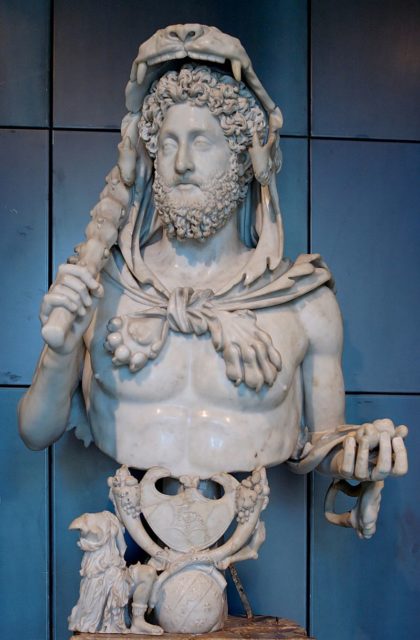
Though the movie didn’t quite show Commodus’ obsession with gladiators, it showed the effects of a broken government being propped up by games to distract the people. Commodus seems to be more calculating in his idea for games, but the idea is heavily featured in the film. Historically, Commodus was supposedly quite physically fit and proud of his combat abilities.
Commodus is shown fighting in the arena only once, but he had quite a long record of fighting in the coliseum. He killed animals and other gladiators, and though he seems to have been a decent fighter, and great with a bow, the fights were certainly staged to ensure the emperor wasn’t harmed.
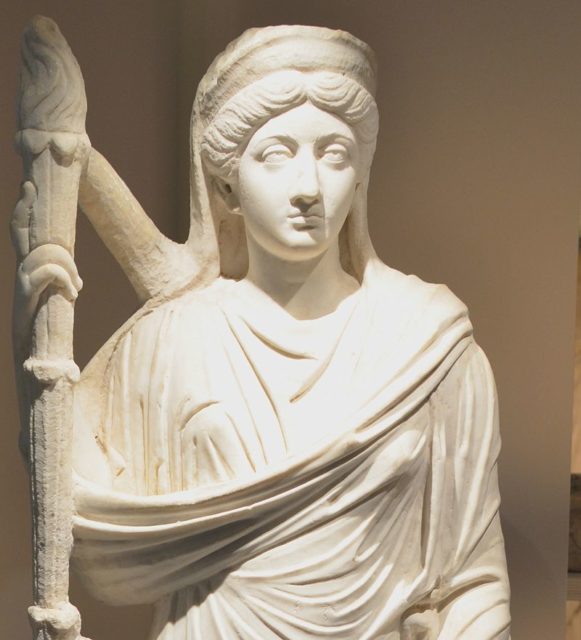
Commodus’ sister, Lucilla, actually did try to kill her brother. She was deeply concerned by her brother’s already troubling reign and, with senate support, got an assassin to kill Commodus. Unfortunately for Lucilla, the assassin was caught only a few feet from his target by Commodus’ guards. Lucilla was banished to Capri, only to be executed a year later.
The breaking point and Commodus’ real death
But wait, wasn’t Commodus killed by a Gladiator? Well, kind of, but not really. Commodus hired a wrestler to train him to be even better in the arena. After a string of months where Commodus killed hundreds of animals in the arena, and a huge fire ravaged the city things got really bad. Commodus decided to rename practically everything in the empire after himself. The twelve months were renamed to reflect Commodus’ full twelve names, the city, and even the people, the armies, and senate were all officially given commod- as the root of their new name.
This prompted a conspiracy where Commodus’ concubine got him quite drunk and let in Narcissus, the wrestler, who proceeded to strangle Commodus to death. Quite a quiet and unspectacular death, so it’s easy to see why the movie had Commodus killed in the arena.
Unfortunately for Romans, this solved very little. On New Year’s day, 193 CE, Rome found a new emperor in Pertinax. He would be one of five Emperors who would hold the throne in a tumultuous year that involved the auctioning off of the emperorship by the Praetorian Guard.
Gladiators were spectacular but had a longer life expectancy than shown in the film
Aside from the empire and politics, the movie focuses heavily on gladiators, it’s in the name after all. Gladiator operates in a logically improbable world. Though there are only a handful of gladiator bouts they seem to be fought to the death with the exception of the single combat with the tigers. No system of gladiatorial combat could be successful if half of the gladiators were killed off in every bout. It would make gladiators prohibitively expensive and even good fighters can slip up at any time. Surrendering or yielding was far more common.
Historians have known this for a long time, but more and more evidence points to the idea that yielding in combat was by far the norm. combats became exhausted, wounded, or knew that they were outmatched and held up a hand to stop the fight. Surely people died in the fighting, animal bouts were unpredictable and group battles were likely more deadly, but your average fight likely ended with everyone still alive. The thumbs up or down (which was likely the reverse of what was shown in the movie) was intended for those fighters who yielded after a terrible or cowardly fight, of both men fought well they could expect to live on.
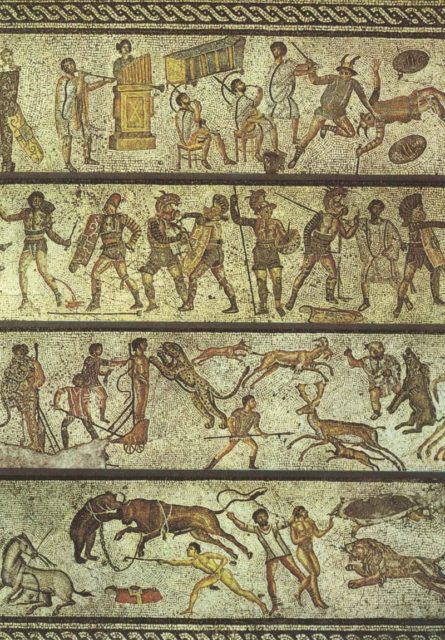
Other than that, the spectacle of gladiatorial combat was well represented. Entire scenes of battle were set up, trees were brought in to create forests for animal hunts and, at one point, naval battles were fought in the arena.
The true history of the events of The Gladiator is still quite interesting, but longer and less spectacular in general than the film. Showing Commodus as a gladiator more could have been interesting, but presents the character as more of a crazy villain instead of an emotional but terrifying and calculating enemy
